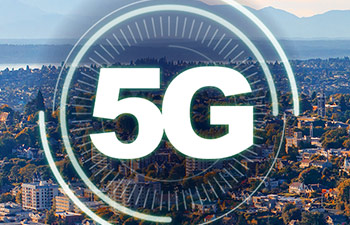Real-time ALL G SON
As the OpenRAN Network Controller unifies and abstracts the RAN while orchestrating it in real-time, making it self-configuring, self-optimizing, and self-healing, any RAN additions to the network are done quickly, without specialized staff and without compromising end user QoE. Parallel Wireless SON software module provides the benefits of hands-free, automatic network configuration, optimization and management. As this SON solution works in a closed-loop, it is able to take feedback from the network into account and automatically revert back to the last working state in the case of network degradation, all without any human intervention. Decisions are made in real-time to provide end-users with more consistent, seamless experience: users experience faster handoff, session continuity, and less dropped calls. This solution is completely interoperable with any technology (5G, 4G, 3G, 2G, and Wi-Fi). X2-based Inter-cell Interference Coordination (ICIC) functionality improves the cell-edge experience, as SON mitigates interference to ensure optimal QoE for each subscriber. As this SON solution improves the network performance as well as resource and spectrum utilization, it ultimately provides the benefits of energy and cost savings to the operator and improved QoE for the end-user.
Parallel Wireless SON module features include:
- Multi-technology network SON
- Operates in real-time
- Built on automation and programmability principles of SDN
- Uses standard XML, REST and YANG based interfaces
- Open-APIs integration with macro SON dynamically and in real-time
- Self-Optimizing Network with load balancing, mobility and ANR neighbor management
- Self-healing
- Carrier-grade
SELF-OPTIMIZATION FEATURES AND BENEFITS
With densification of mobile networks, there are multiple layers of radio technologies, frequencies and vendor equipment. As the data usage rise, this makes it nearly impossible to cost-effectively manage, create, and optimize neighbor relations between these outdoor and indoor coverage layers. Coverage holes can also occur due to bad RF planning, ever-changing traffic patterns, user density, or “sleeping” cells. Handover failures, service drops, and undesirable handovers also deteriorate the user experience and wastes network resources.
The self-optimization features of Parallel Wireless SON include:
- Automatic Neighbor Relations (ANR) to support neighbor list relations between any technology to help to reduce drop rate, improve handover success rate and user experience, and better utilize network resources
- PCI Conflict and Confusion Avoidance to create a pro-active solution to optimize the network
- Load Balancing and Traffic Steering to help transfer traffic from overloaded outdoor or indoor cells to a neighboring cell to ensure even load distribution and as a result, provides more efficient network resource management to the operator and enhances QoS/ QoE for the end-users
- Coverage Capacity Optimization (CCO) to enhance the coverage footprint or to reduce it by either TX power or E-Tilt optimization.
- Mobility Robustness Optimization to assist with dynamic handover optimization to Improve and optimize handover success rate, user experience, handover interruption time, and average cell edge throughput
- Paging Optimization to reduce paging signaling
- RACH Optimization to enhance the uplink coverage and manage UL users capacity
- Inter Cell Interference Coordination (ICIC) and eICIC to reduce and mitigate interference between cells
These features enable real-time self-optimization of the network to bring additional coverage and capacity and enhance the user experience.
In addition, self-healing capabilities provide network resilience by instructing neighboring cells to compensate coverage for the cell that went down and deliver hands-free maintenance for cell outages to ensure consistent and reliable experience to the end users.


